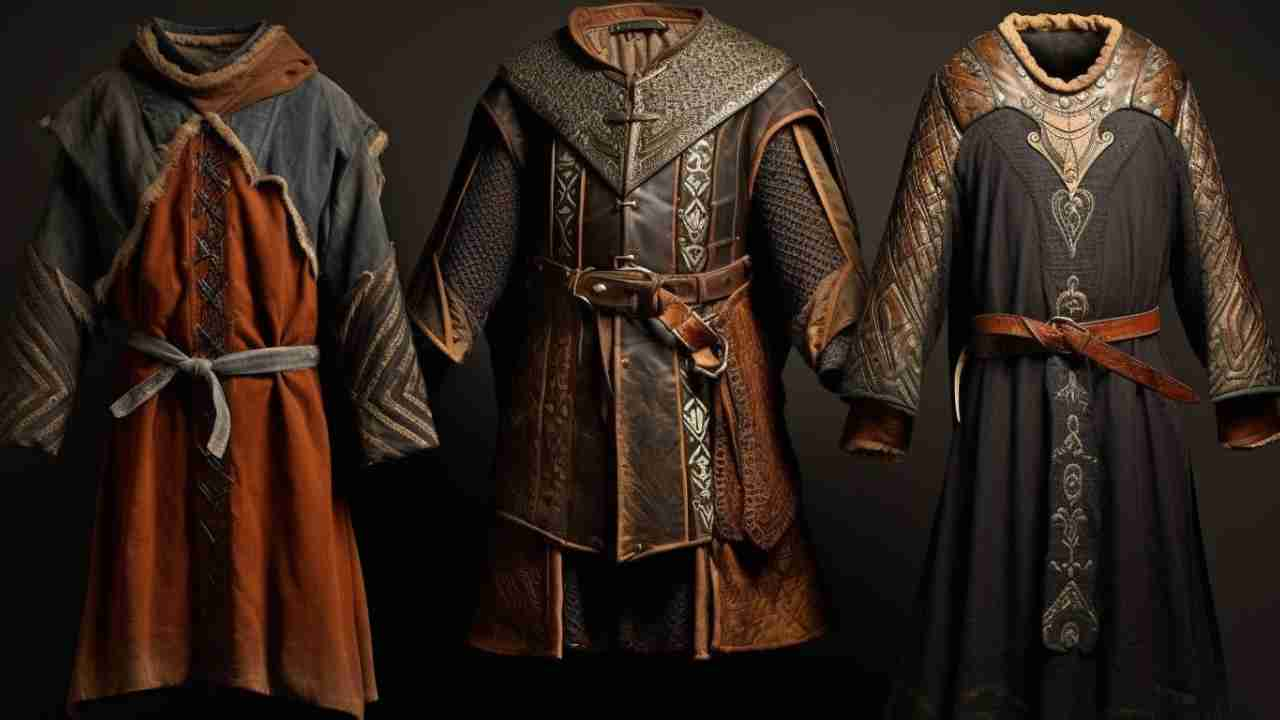The 4 Versatility of Female Viking Clothing From Battle Gear to Everyday Wear
From fierce warriors to skilled craftspeople, the women of ancient Viking society were known for their strength, resilience, and flexibility. And their clothing played a crucial role in reflecting these traits. Many of us are familiar with the image of a Viking woman in battle, donning a helmet and fierce armor. But did you know that their clothing was just as versatile in everyday life? In this post, we will explore the different layers and styles of Viking lady clothes. So step into the world of female Viking clothing. Discover the fascinating history and versatility of these formidable women. 1. Practicality Viking clothing was designed to withstand harsh weather conditions. This can provide maximum mobility for everyday tasks. Women’s outfits were constructed with layers of wool and…
From fierce warriors to skilled craftspeople, the women of ancient Viking society were known for their strength, resilience, and flexibility. And their clothing played a crucial role in reflecting these traits.
Many of us are familiar with the image of a Viking woman in battle, donning a helmet and fierce armor. But did you know that their clothing was just as versatile in everyday life? In this post, we will explore the different layers and styles of Viking lady clothes.
So step into the world of female Viking clothing. Discover the fascinating history and versatility of these formidable women.
1. Practicality
Viking clothing was designed to withstand harsh weather conditions. This can provide maximum mobility for everyday tasks. Women’s outfits were constructed with layers of wool and linen, making them warm and waterproof.
The long sleeves and skirts offered protection from the cold. The apron, which was often made of strong leather, provided durability for activities such as farming and fishing. Additionally, Viking women often adorned their outfits with various pockets and pouches for carrying tools and necessities.
2. Symbol of Their Social Status
Among the various garments, Viking cloaks hold a special significance. They were not only a practical article of clothing but also a status symbol. The quality, color, and embellishments of a woman’s cloak indicated her social standing.
It has richer and more elaborate cloaks being worn by women of higher status. This significance is still evident today with the availability of Viking cloaks for sale. This allows modern women to embody the proud and powerful image of the Viking clothing women and display their social status through this iconic garment.
3. Ability to Be Transformed Into Different Styles
Unlike many other types of traditional clothing, Viking attire can be transformed into a variety of different styles. This was due to the practicality and functionality of the garments, which allowed for easy adjustments and alterations. Women were able to change the look of their clothing by adjusting the following:
- length
- draping
- or layering of their garments
This allowed for a range of styles to be created, depending on the occasion or personal preference. The ability to be transformed into different styles highlights the ingenuity and adaptability of Viking clothing.
4. Customization Depending on the Weather and Activity
The clothing could be customized to suit the needs and preferences of the wearer. During colder winters, women would layer up with many layers of wool and fur, while also adorning themselves with woven shawls for added warmth. On warmer days, they would opt for lighter and more breathable fabrics such as linen or silk.
Additionally, the clothing could also be adjusted depending on the activity, with women wearing shorter skirts for ease of movement during work or battle, and longer skirts for more formal occasions. The flexibility and adaptability of Viking clothing allowed women to be comfortable and stylish in any situation.
Discover the Versatility of Female Viking Clothing
The versatility of female Viking clothing is a testament to the resilience and adaptability of Viking women. From battle gear to everyday wear, these garments not only served practical purposes but also reflected the social status and identity of Viking women.
To learn more about the fascinating history of Viking clothing, explore further resources and visit historical reconstructions. Embrace the fierce and versatile spirit of the Viking women. Incorporate elements of their clothing into your wardrobe.
Looking for more tips and advice? You’re in the right place! Make sure to bookmark our page and come back to check out more interesting articles.
Author bio:
Talha is a passionate writer and educator with a deep interest in fostering innovative learning experiences. With a background in digital marketing, he is dedicated to exploring the intersection of technology and education. His expertise lies in providing insightful and informative content on various educational topics, ranging from online learning platforms to pedagogical strategies. Through his writing, he aims to inspire educators and learners alike to embrace new approaches and tools that enhance the educational journey.




